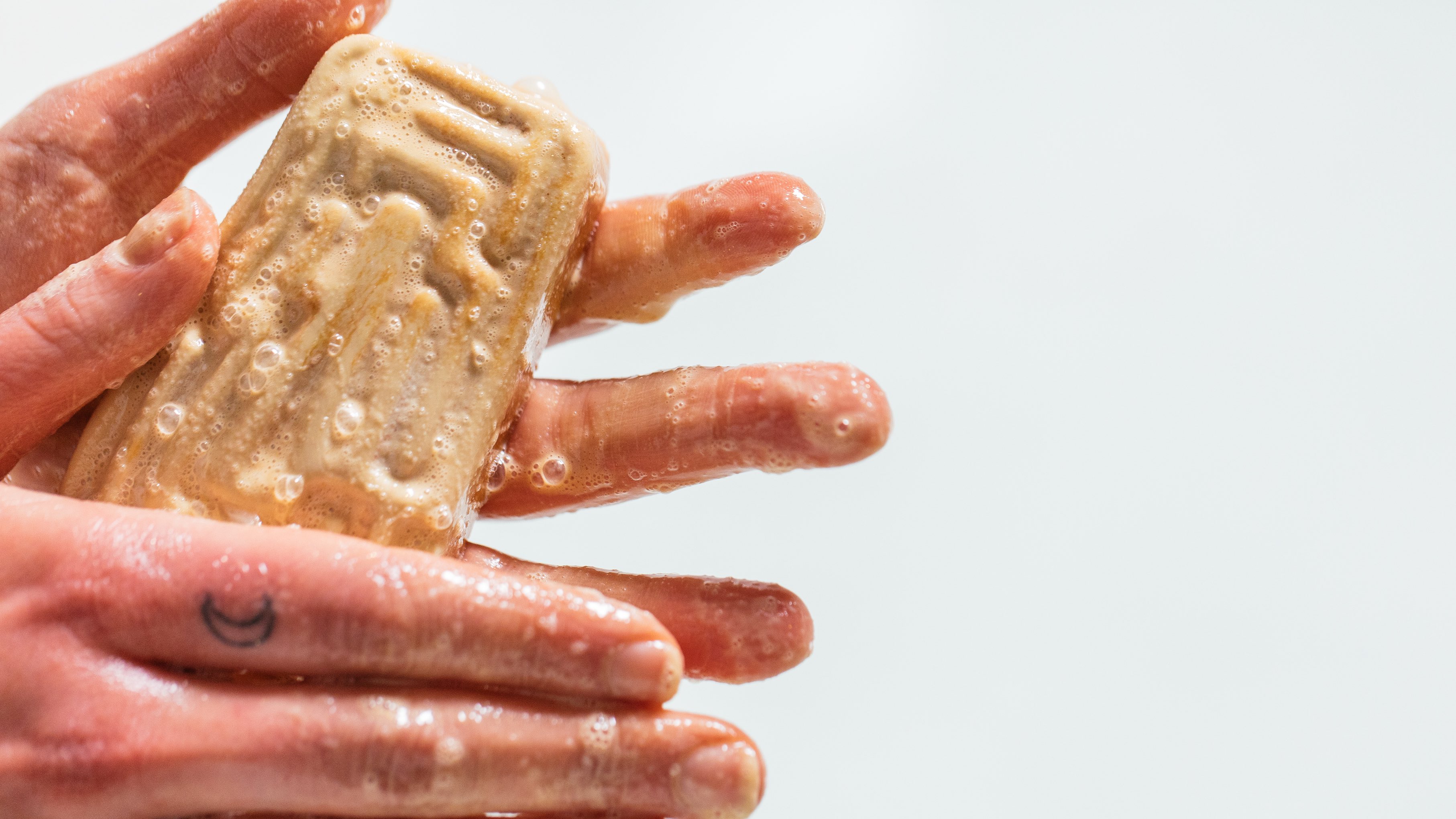Writer
Amber Baker
Soap has been a staple part of cleansing routines for as long as we can remember but have you ever wondered about how it’s made or how it actually works? Thought not, here are the facts.
How Does Soap Work?
In a nutshell, soap cleanses the skin by enabling oil to mix with water, meaning grease and dirt can be washed away under the tap. A soap molecule acts a little like a magnet. One half of the molecule repels water (sciencey folk call this hydrophobic), and attaches itself to the oils on the skin. The other half does the opposite and binds to water (hydrophilic to those keeping track). The oil is then suspended in the water, allowing it to be rinsed off easily, whisking dirt and grease away with it. This deep cleansing leaves behind that familiar ‘squeaky clean’ feeling on the skin.
Skin is naturally covered in a thin layer of friendly bacteria called microflora. This layer keeps your skin protected from germs, infection and the less friendly bacteria that can cause illness. But what happens to it when you wash? Washing with soap means the microflora gets washed away as well. A study has shown that when washing with antibacterial soap, the skin is stripped of this natural protective layer leaving skin open to germs and possible infection. Washing with solid soap is less disruptive and does just as good a job at cleansing on it’s own - an excellent reason to stick to good old solid suds.
A Brief History of (Bath)Time
The earliest soaps were simple mixes made by combining oils with wood ash, clay or sand. Although soap making has developed since then, it has remained largely based around the same process: boiling oils and fats with an alkali to produce soap and its byproduct, glycerine. Historically, the fats used were usually tallow (rendered beef or sheep fat), with olive, palm and coconut oils joining the list later. Although animal tallow still remains a common material used today, all Lush soaps use vegetable oils in their bases.
Due to food shortages during the first world war, oils and fats used for soap making were in limited supply which lead to the development of the first chemical alternatives. These ‘modern’ liquid soaps, also known as detergents, were created from artificial surfactants and additives and by the 1950s, sales had completely outstripped the sales of traditional solid soap.
It has only been in the last decade or so that we have been obsessed with liquid soaps, especially those with added antibacterial ingredients promising to kill almost 100% of bacteria. Liquid soaps, however, tend to be over-packaged in non-recyclable bottles where bacteria can hide. With 12.7 million tonnes of plastic entering our oceans every year, perhaps it’s time to lose the bottle and fall back in love with bar soaps.
The Beauty of Soapy Innovation
Soap might not be for everyone but resting on laurels and playing it safe has never been the Lush way. By experimenting with different oils to use as a base, soaps that have different textures and effects on the skin have been created. Olive, argan and rapeseed oils, as well as many more, have all be used to create soaps with textures that are completely different to any soap you’ve seen before - perfect for those who like to switch up their bathing routine.
And soap isn’t the only thing that can clean the skin. A variety of ingredients can be added to the mixture for a range of wonderful effects. Scrub up with sand, cleanse with charcoal, get down and buff with sea salt and even soften with seaweed. All of these, and more, can be added to help cleanse the skin in their own unique ways. Lush experiments with all kinds of different ingredients to offer a wide range of soap that everyone can enjoy using, no matter what floats your rubber duck.
So, whether you’re a long standing soap fan or just looking for new lathers, Lush soaps are sure to leave you squeaky clean. Keen to ditch the liquids and try more naked, solid soap? Check out the whole range here

